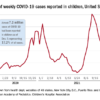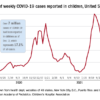NEW YORK (Reuters) – , an observational study shows.
“Both immune system and vascular alterations take part in the pathogenesis of COVID toe,” Dr. Charles Cassius of AP-HP Hopital Saint-Louis in Paris told Reuters Health by email. “Treatment should target preferentially immune activation.”
As reported in the British Journal of Dermatology, Dr. Cassius and colleagues compared skin and blood endothelial and immune system activation in 50 individuals with CLLs and 13 with pre-COVID SCs, defined as cold-induced sporadic chilblains (not including chilblain lupus). The median age was 32; about 2/3 were women; and 90% were White.
As Dr. Cassius indicated, histological patterns were similar and transcriptomic signatures overlapped in both the CLL and SC groups, with type I interferon polarization and a cytotoxic-natural killer gene signature.
CLLs had higher IgA tissue deposition and more significant transcriptomic activation of complement and angiogenesis factors compared with SCs.
Further, 73% of CLL patients had a systemic immune response associated with IgA anti-neutrophil cytoplasmic antibodies, as well as an elevated type I interferon blood signature compared to controls.
Additional analyses using blood biomarkers confirmed endothelial dysfunction in CLL as well.
The authors state, “Our findings support an activation loop in the skin in CLL associated with endothelial alteration and immune infiltration of cytotoxic and type I IFN polarized cells leading to clinical manifestations.” They note that “local or systemic anti-inflammatory treatment could reverse cutaneous manifestations.”
Dr. Michael Cameron, assistant professor of dermatology at Mount Sinai in New York, commented in an email to Reuters Health, “This thoughtfully designed study provides additional support to the notion that there is likely a direct relationship with COVID-19 infection and CLLs.”
“What separates this study from previous reports on this association is its attempt to illustrate the underlying pathophysiology,” he said. “Comparison of histology, transcriptomic signatures, and blood biomarkers for CLL patients and a comparator group of pre-pandemic seasonal chilblains show similar overlap in patterns, supporting the notion that these two entities share a common pathophysiology.”
“As such, the take-home message for clinicians is to manage ‘COVID toes’ like you would seasonal chilblains, namely environmental modifications – i.e., avoid cold/wet exposure and wear warm/dry clothing),” he said. “These lesions often subside spontaneously but can also be treated with topical corticosteroids if itchy or painful.”
“If the lesions are persistent,” he added, “then referral to a rheumatologist or dermatologist with expertise in this area can be made for further autoimmune work-up and consideration of systemic treatments.”
Reuters Health Information © 2021


